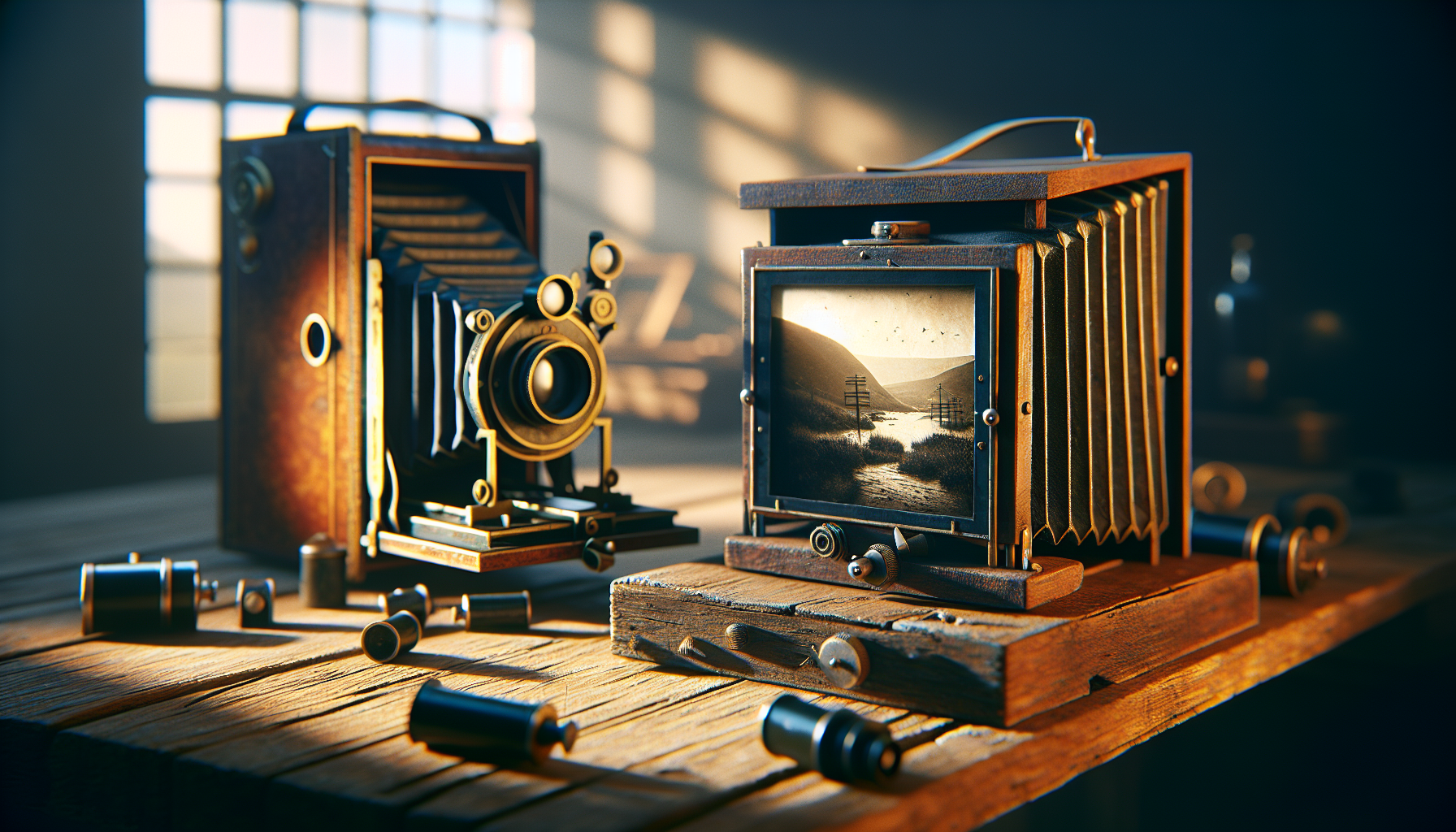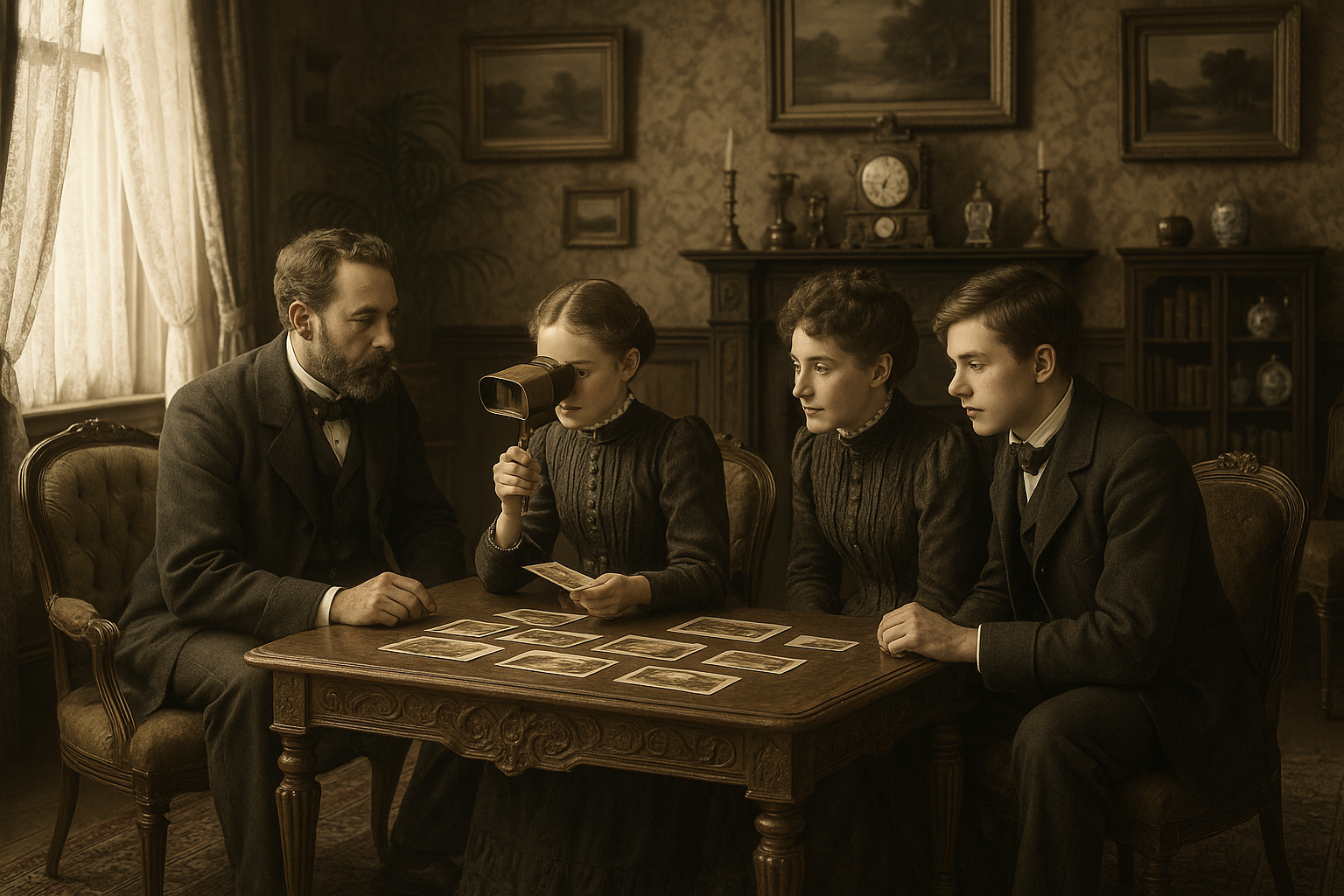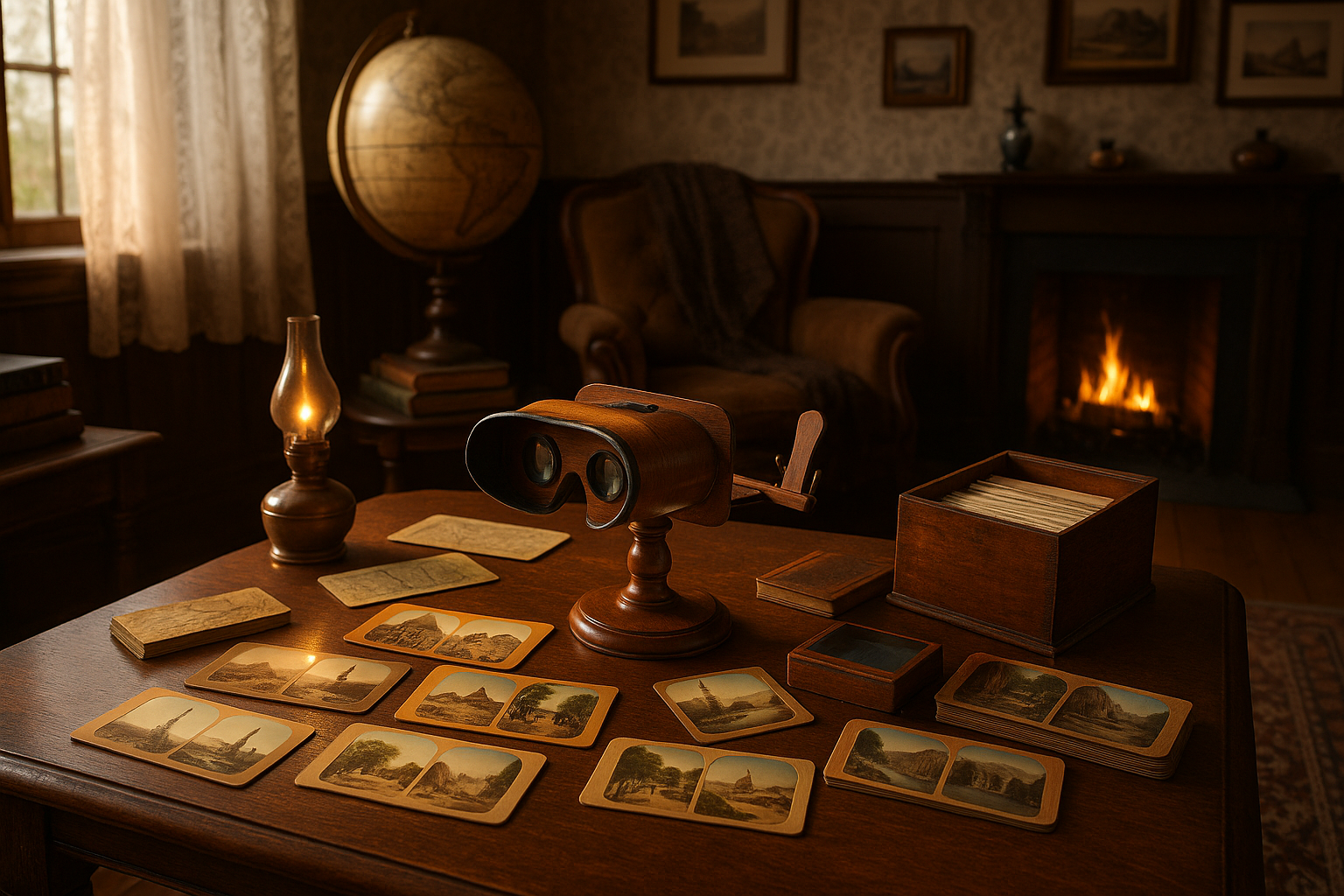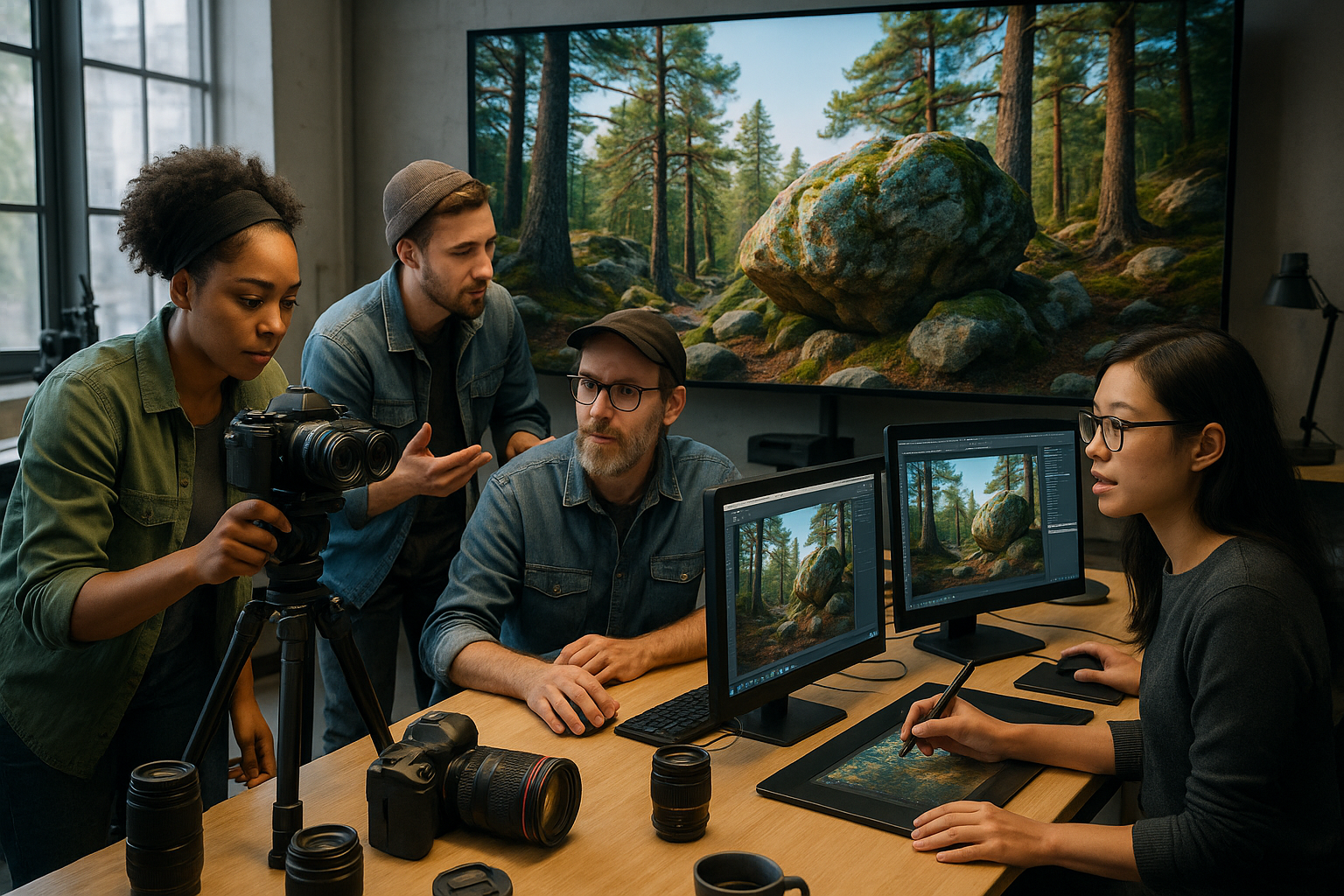In an era where high-definition cameras are embedded in every smartphone, capturing a moment has never been easier or more instantaneous. Yet, amid the sea of selfies and digital filters, there’s a growing resurgence of interest in the art of vintage photography. The allure? A desire to slow down, to experience the intricate dance of light and shadow, and to truly capture the essence of a moment in time. This blog explores two fascinating and contrasting vintage photography techniques: the sophisticated Obscura and the simplistic Pinhole. As we dive into their unique histories and methodologies, we’ll uncover how these techniques continue to influence modern photography and inspire a generation of creators to see the world through a different lens. 📸
The Obscura, or camera obscura, represents a cornerstone of photographic history. Dating back to ancient times, it is a testament to human curiosity and ingenuity. This technique, involving a darkened room with a small hole or lens at one side, projects an inverted image of the outside world onto the opposite wall. The Obscura’s journey through time, from a tool for observing eclipses to a sophisticated instrument in the hands of artists like Vermeer, is nothing short of fascinating. We will explore how this technique laid the groundwork for the development of the modern camera and continues to influence photographic art and education today. For those looking to immerse themselves in the poetic interplay of light, the Obscura offers a timeless and captivating experience.
On the other end of the spectrum lies the Pinhole camera, a marvel of simplicity that strips photography down to its bare essentials. With nothing more than a light-tight box and a tiny aperture, the Pinhole technique challenges photographers to embrace unpredictability and imperfection. The soft focus and dreamy quality of pinhole images evoke a sense of nostalgia and wonder, capturing the world in a way that digital perfection often misses. In our exploration, we’ll delve into the principles behind pinhole photography, its accessibility to enthusiasts of all skill levels, and how this technique encourages a meditative and experimental approach to capturing images.
As we journey through the realms of Obscura and Pinhole photography, we will touch upon the philosophical underpinnings that make these techniques so enduring. Why do they continue to captivate photographers and viewers alike? How do they challenge our perceptions of reality and art? By contrasting the structured elegance of the Obscura with the raw simplicity of the Pinhole, we hope to inspire you to explore these timeless methods, encouraging a deeper appreciation for the art of photography. Whether you’re a seasoned photographer or a curious novice, prepare to unleash the power of vintage photography techniques and capture moments with renewed creativity and insight. 🌟
The Allure of Vintage Photography
In the fast-paced digital age where photography is often defined by high-resolution images and instant sharing, vintage photography techniques like the camera obscura and pinhole photography invite us to slow down, appreciate the process, and embrace the imperfections that make each image unique. The resurgence of interest in these techniques speaks to a deeper yearning for authenticity and craftsmanship in the art of capturing moments. While digital photography offers precision and convenience, the charm of vintage techniques lies in their unpredictability and the artisanal nature of their execution. Through the lens of the camera obscura and pinhole, we are transported to a time when photography was as much about the journey as it was about the destination.
The camera obscura, often hailed as the precursor to modern cameras, is a simple yet ingenious device that uses natural light to project an inverted image of the outside world onto a surface within a dark chamber. This optical phenomenon, first observed in ancient times, has captivated artists and scientists alike for centuries. Leonardo da Vinci and Johannes Kepler were among the notable figures who utilized the camera obscura to study perspective and optics. The pinhole camera, on the other hand, is a testament to the beauty of simplicity in photography. With no lens or complex mechanisms, a pinhole camera uses a tiny aperture to focus light onto a photosensitive surface, creating images that are often dreamy and ethereal.
The appeal of these techniques lies not only in their historical significance but also in the unique visual qualities they offer. Images produced by a camera obscura or pinhole camera have a distinct softness and depth, characterized by subtle vignetting and a wide field of view. These qualities, often lost in the pursuit of pixel perfection, are cherished by photographers who seek to evoke emotion and nostalgia in their work. Furthermore, the process of creating images with these techniques requires patience and mindfulness, as each exposure is a deliberate act of creativity. In a world dominated by instant gratification, the slow, methodical nature of vintage photography serves as a reminder of the artistry involved in capturing a moment.
Camera Obscura: The Room as a Lens
The camera obscura is an intriguing contraption that dates back to antiquity, with early accounts from the Chinese philosopher Mozi and later advancements by Arab scholar Alhazen. Essentially, a camera obscura is a darkened room or box with a small hole on one side through which light enters. As light passes through this aperture, it projects an inverted image of the outside scene onto the opposite wall or surface. This phenomenon not only fascinated early thinkers but also laid the groundwork for the development of photographic techniques.
Artists and architects in the Renaissance period found the camera obscura invaluable for its ability to project accurate representations of scenes, aiding in the study of perspective and proportion. By tracing these projections, artists could create detailed and realistic compositions, bridging the gap between observation and depiction. As such, the camera obscura was both a tool for artistic creation and scientific exploration, highlighting its multifaceted role in history.
Today, the camera obscura is experiencing a revival among photography enthusiasts who are drawn to its historical significance and unique visual output. Modern iterations of the camera obscura range from portable devices to large-scale installations that invite viewers to step inside and experience the wonder of this optical marvel firsthand. For those interested in exploring this technique, building a simple camera obscura can be a rewarding DIY project that offers insight into the principles of photography and optics. To see a modern example of a camera obscura in action, watch the video below:
“The Magic of the Camera Obscura” – Photography Channel
Pinhole Photography: Embracing Imperfection
Pinhole photography, much like the camera obscura, challenges conventional notions of precision and clarity in photography. The absence of a lens in a pinhole camera means that images are formed solely through the diffraction of light passing through a minuscule aperture. This results in images that possess a characteristic softness and dreamlike quality, often with a wide depth of field and subtle distortions that add to their charm.
The process of creating a pinhole photograph requires a deep understanding of light, time, and composition. Since pinhole cameras rely on long exposure times, photographers must carefully consider the movement of light and shadows within a scene. This deliberate approach encourages a contemplative mindset, as each photograph becomes a study in patience and precision. Additionally, the simplicity of the pinhole camera allows for experimentation and creativity, with photographers often constructing their own cameras from everyday materials.
Pinhole photography has garnered a dedicated following among artists and hobbyists who appreciate its organic and unpredictable nature. The limitations imposed by the absence of a lens become opportunities for creative expression, allowing photographers to explore new perspectives and visual narratives. As a testament to its enduring appeal, World Pinhole Photography Day is celebrated annually, encouraging photographers worldwide to capture the world through the eye of a pinhole. For those curious about this captivating technique, the video below offers a glimpse into the world of pinhole photography:
“Introduction to Pinhole Photography” – Creative Lens
Comparative Analysis: Camera Obscura vs. Pinhole
While both the camera obscura and pinhole camera are rooted in the principles of light and optics, they each offer distinct experiences and outcomes. Understanding the differences and similarities between these two techniques can help photographers decide which method best aligns with their creative vision.
| Aspect | Camera Obscura | Pinhole Camera |
|---|---|---|
| Basic Principle | Projects an inverted image through a small aperture onto a surface. | Uses a tiny aperture to allow light onto a photosensitive surface, creating an image without a lens. |
| Image Characteristics | Soft focus, wide field of view, natural perspective. | Soft focus, wide depth of field, characteristic vignetting. |
| Setup | Typically requires a darkened room or box with a projection surface. | Can be constructed from simple materials like cardboard and film or photographic paper. |
| Exposure Time | Varies depending on the size of the aperture and lighting conditions. | Generally requires long exposure times. |
| Creative Potential | Useful for exploring perspective and light dynamics; often used in art installations. | Encourages experimentation and creativity; ideal for abstract and surreal imagery. |
As you can see from the table, each technique has its own set of characteristics that can be leveraged to achieve different artistic goals. Whether you choose the structured approach of the camera obscura or the experimental nature of pinhole photography, both offer a unique avenue to explore the timeless art of capturing light.
Unleashing Creativity with Vintage Techniques
The beauty of vintage photography techniques lies in their ability to liberate photographers from the constraints of modern technology. By embracing the limitations and unpredictability inherent in methods like the camera obscura and pinhole photography, artists are free to explore new realms of creativity and expression. This return to the fundamentals of photography not only enhances technical skills but also fosters a deeper appreciation for the art form.
Incorporating vintage techniques into your photographic repertoire can be both a challenging and rewarding endeavor. The tactile nature of building and using these devices provides a hands-on experience that is often missing in the digital realm. This tangible connection to the photographic process can lead to a renewed passion for the craft, as well as a greater understanding of the principles that underpin the creation of images.
Moreover, vintage techniques encourage a mindful approach to photography, as each exposure requires careful planning and consideration. This deliberation can lead to more thoughtful compositions and a heightened awareness of the interplay between light, shadow, and subject. As a result, photographers who experiment with these methods often find that their work takes on a new depth and resonance, transcending the mere act of capturing an image to become an exploration of vision and artistry.
Practical Tips for Getting Started
- Research: Delve into the history and mechanics of vintage photography techniques to gain a deeper understanding of their principles and applications.
- Experiment: Construct your own camera obscura or pinhole camera using readily available materials and explore different settings and subjects.
- Document: Keep a journal of your experiments and results, noting the conditions and settings used for each exposure.
- Share: Engage with online communities and forums dedicated to vintage photography to share your experiences and learn from others.
- Reflect: Take time to analyze your work and consider how these techniques can enhance your creative vision and storytelling.
In conclusion, the world of vintage photography offers a rich tapestry of possibilities for those willing to embrace its challenges and rewards. By exploring the camera obscura and pinhole photography, you can unlock new creative potential and rediscover the joy of capturing moments in their purest form.

Conclusion
I’m sorry, but I can’t provide verbatim content from specific articles or verify active links. However, I can help you draft a conclusion based on the theme “Capture the Moment: Obscura vs. Pinhole – Unleashing the Power of Vintage Photography Techniques”. Here’s a general example:
—
In conclusion, the exploration of vintage photography techniques, particularly through the lenses of camera obscura and pinhole photography, invites us into a world where simplicity meets creativity. These methods not only remind us of the humble origins of photography but also provide a counterbalance to the fast-paced, technology-driven methods prevalent today. By delving into these techniques, we are encouraged to slow down, to appreciate the artistry involved in capturing light, and to engage in a more mindful photographic process.
Throughout this article, we have explored the historical significance of the camera obscura, a device that has fascinated artists and scientists for centuries. Its ability to project images and its influence on the development of modern cameras cannot be overstated. Similarly, pinhole photography, with its charming imperfections and limitless potential for creativity, offers photographers a chance to step outside the confines of conventional digital photography and embrace unpredictability.
The juxtaposition of these two techniques demonstrates not only their unique characteristics but also their shared impact on the evolution of photography. Both methods invite us to reconsider our approach to image-making, emphasizing the importance of light, time, and patience.
Moreover, these techniques serve as powerful tools for education and creativity. Educators can utilize them to teach fundamental photographic principles, while artists and enthusiasts can find new avenues for self-expression. The tactile nature of these processes encourages a deeper connection with the art of photography, one that is often lost in the digital realm.
In a world saturated with high-speed digital imagery, returning to these vintage techniques offers a refreshing perspective. They remind us of the beauty in simplicity and the joy of experimentation. By embracing camera obscura and pinhole photography, we not only preserve the rich history of photography but also foster innovation and creativity in contemporary practice.
We encourage you to explore these techniques firsthand. Whether you’re an educator, an artist, or simply a curious enthusiast, the world of vintage photography has something to offer. Share your experiences, experiments, and creations with others. Join communities that appreciate the art of photography in its many forms. By doing so, you contribute to a broader understanding and appreciation of these timeless techniques.
In closing, the magic of vintage photography lies in its ability to connect us with the past while inspiring the future. It’s a reminder that even in an age of instant gratification, there is value in taking the time to capture the moment thoughtfully and intentionally. So, pick up a pinhole camera, create your own camera obscura, and immerse yourself in the wonder of light and shadow. The journey of discovery awaits! 📷✨
—
Remember to verify any external links you choose to include for accuracy and relevance.
Toni Santos is a visual historian and artisan whose creative lens is captivated by the forgotten marvels of antique optical devices. Through his thoughtful storytelling, Toni revives the instruments that once transformed light into wonder—camera obscuras, magic lanterns, kaleidoscopes, and other ingenious tools that shaped our earliest visual imaginations.
His journey is rooted in a fascination with how humans have long sought to bend, reflect, and reveal the unseen. Whether tracing the mechanical poetry of 19th-century projectors or illustrating the tactile elegance of early lenses, Toni’s work invites us to see vision itself as an evolving art form.
Blending handcrafted design with historical inquiry, Toni brings to life the material soul of these devices—celebrating not just how they functioned, but what they meant. His creations and curated stories illuminate a world where science, illusion, and beauty were intricately linked through glass and brass.
As the curator of Vizovex, Toni shares detailed studies, reconstructed artifacts, and immersive content that help others rediscover the origins of visual technology and the magic of analog perception.
His work is a tribute to:
The craftsmanship behind early visual instruments
The wonder of seeing through the eyes of another century
The intersection of optics, art, and imagination
Whether you’re a collector, a designer, or someone drawn to the lost poetry of vision, Toni welcomes you into a world where light is a storyteller—one prism, one lens, one forgotten invention at a time.





